Whenever I hear that a BMW has grown in a redesign, a little piece of me dies inside. This isn’t to solely impugn BMW. Model bloat happens at every automaker. But it especially hurts when it’s a BMW because that growth often makes the cars lose some of the edge that made them so fun to drive. That’s certainly the case in the latest 3-Series and 4-Series.
So, when I learned that the redesigned 2022 2-Series coupe, which is arriving now, was bigger than its predecessor in every dimension my eyes shot backward into my head. It’s not just a little bigger, it’s real big. It’s roughly 4.3 inches longer, and 2.6 inches wider, though it is an inch lower. The wheelbase has also been lengthened by 2.0 inches and both tracks are wider, by 2.5 inches up front and 1.6 inches in the rear (the M240i’s rear track is 2.4 inches wider).
At 179.0 (or 179.4) inches long, that makes the new 2-Series as long as an E90 3-Series, which was sold from 2005-2011. The curb weights have also risen. Compared to last year’s models (with powertrains held equal) the 230i weighs 108 pounds more at 3,519 pounds, and the M240i is a whopping 209 pounds more, weighing in at 3,871 pounds. All of those signs pointed to a 2-Series that would feel more sluggish and rotund than its predecessor. I traveled to The Thermal Club in the California desert to see if that would be the case.
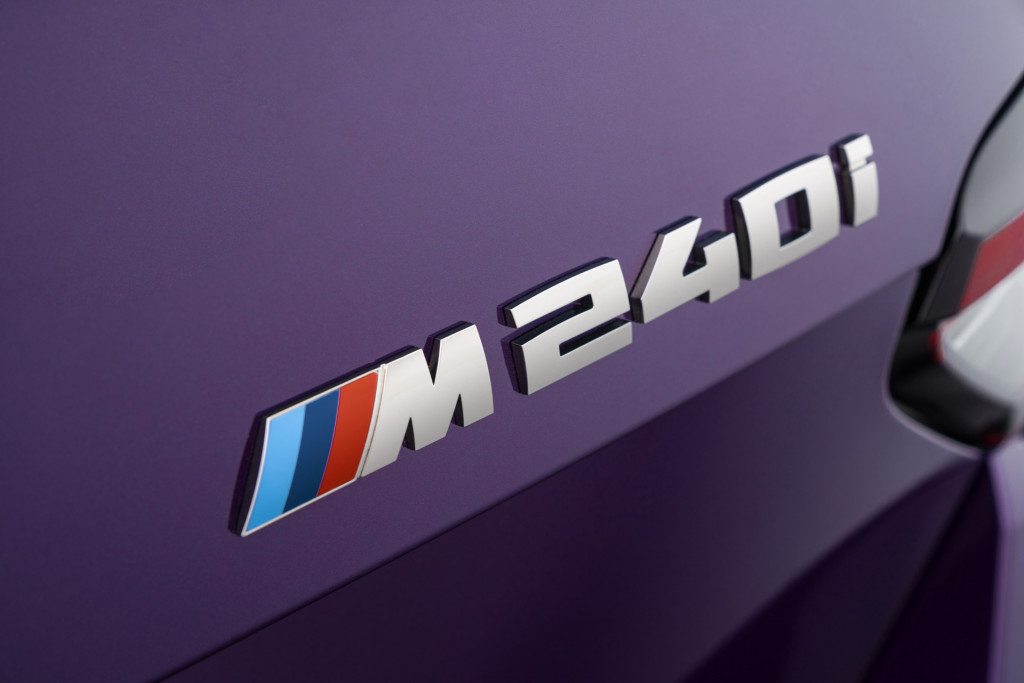
2022 BMW 2-Series
Powertrain selection is simplified
Buyers previously had the choice of rear- or all-wheel drive for both 2-Series models. Now, however, the base 230i only comes with RWD and the M240i with AWD. The 230i is motivated by a 2.0-liter turbo-4 that makes 255 hp and 295 lb-ft of torque. The M240i features a turbocharged 3.0-liter inline-6 that produces 382 hp and 369 lb-ft. An 8-speed automatic is the only choice for both. The 230i will return a 0-60 mph time of 5.5 seconds and the M240i xDrive a time of 4.1 seconds. Top speed is 130 mph for both models (155 mph with available performance tires).
On paper, choosing a model becomes an interesting battle for the enthusiast’s heart. Does RWD with less power, or AWD with more power make for a better car? In practice, there’s no contest: the M240i is the clear favorite if performance is a priority. The acceleration difference between the two cars feels larger than the 1.4-second gap in 0-60 mph times. The turbocharged inline-6 makes easy power from the whole rev range, while coaxing output from the 4-cylinder feels laborious at times. It’s not slow, but it is more tedious.
Beyond that, the M240i’s performance-oriented AWD system doesn’t function or feel like one much of the time. Power goes exclusively to the rear wheels in situations where AWD isn’t necessary. During the street drive, I really only felt it intervene once when I got hard on the power a bit early during a quick left-right sequence and it helped to keep the rear of the car in line. The track at Thermal also gave the system a chance to show its magic, with its fair share of low-speed corners leading into long straights. That makes getting on the power early a priority to carry momentum onto those sections and the added traction from AWD is a welcome security blanket in those situations as I rolled onto the throttle aggressively.

2022 BMW 2-Series
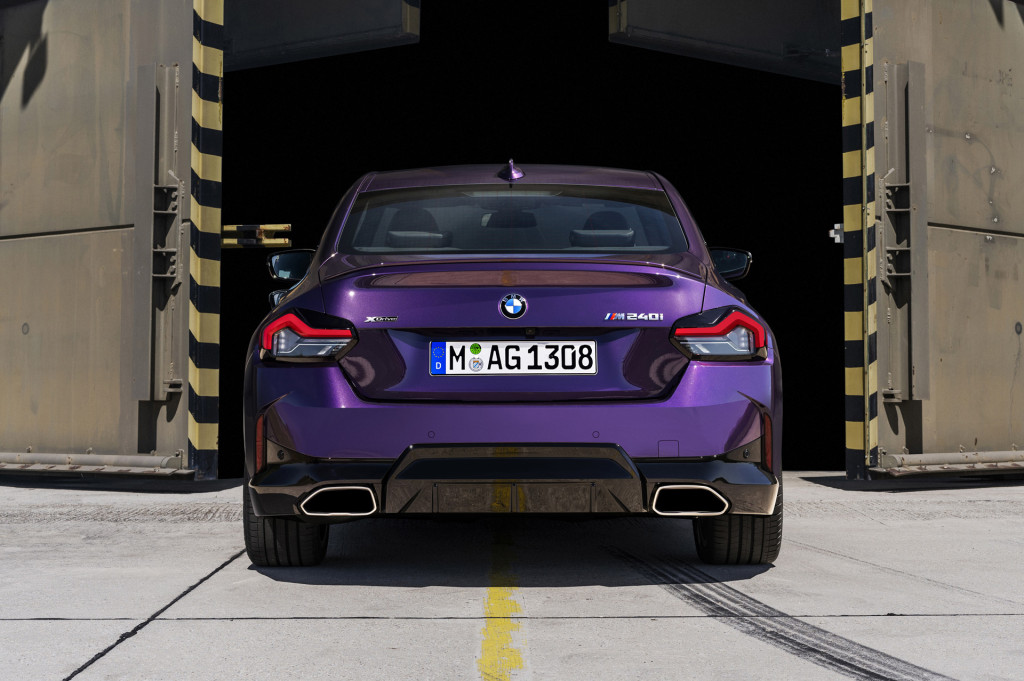
2022 BMW 2-Series
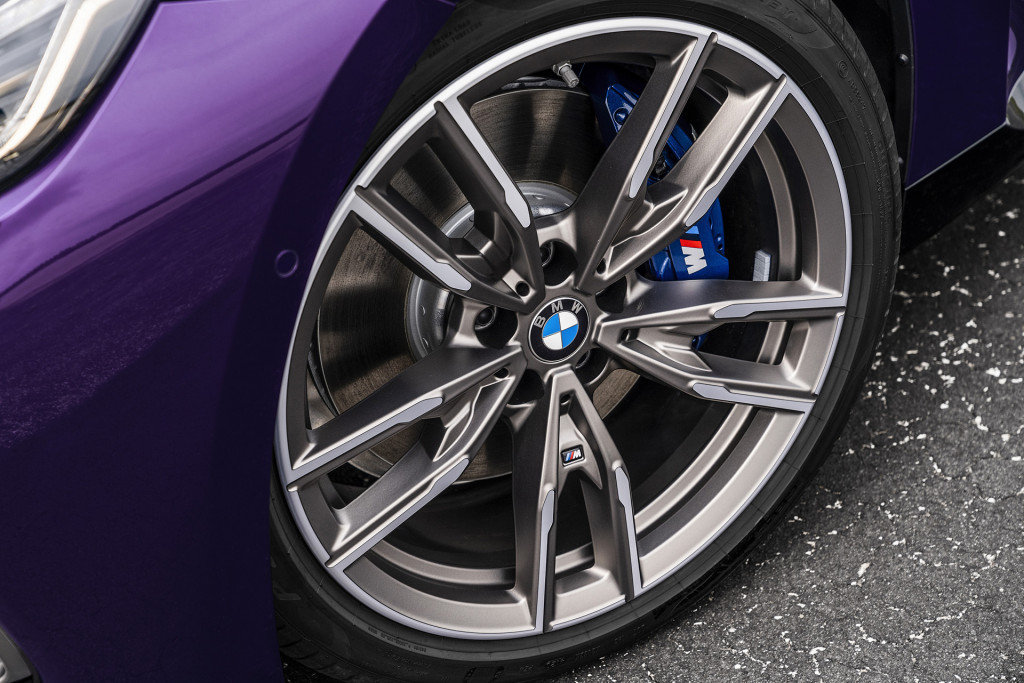
2022 BMW 2-Series
Add weight and lightness?
Both the 230i and the M240i that I tested came with similar performance equipment. The 230i added an M Sport rear differential, M Sport brakes, M sport suspension, variable sport steering, and a rear spoiler as part of a $3,250 M Sport package. The M240i features all of those upgrades as standard, but goes further by swapping in an adaptive M suspension.
Even with the added weight and size, the 2-Series somehow feels smaller from behind the wheel in contrast to the other small BMW models we’ve tested lately. It feels dialed in thanks to quicker steering for a sharp turn-in and plenty of feedback. That communication as the car approaches the limit that has been missing from the latest 3-Series and 4-Series models, so it’s great to see it in the 2-Series.
Though the M240i isn’t suited to the large southern track at Thermal, it would be an absolute blast on a tighter circuit or even an autocross course. BMW says the new 2-Series has nearly 50:50 weight distribution and 12% more torsional stiffness. The whole package feels solid, and the suspension in both models does a great job of controlling not only body roll, but rebound. The nose dips under hard braking, but it doesn’t bounce back up and unsettle the front or rear. The M240i’s comfort settings make it ride a bit better on the road, and the 230i has a busier ride with the optional sport suspension.
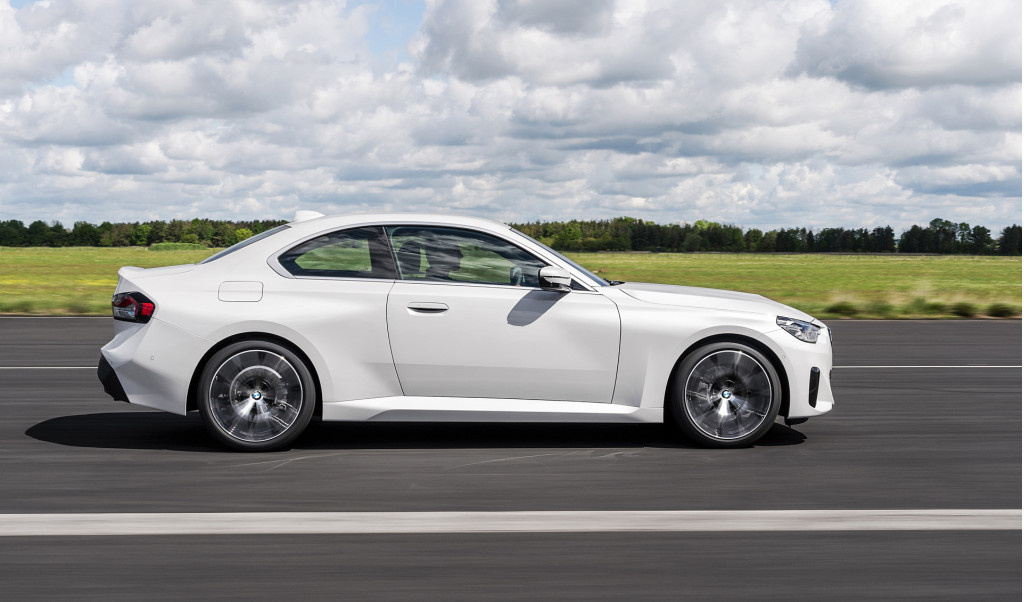
2022 BMW 2-Series
New car, classic proportions
The profile of the new 2-Series makes me believe it has that near-perfect weight distribution. The cabin looks like it has been shoved rearward, giving the coupe classic long-hood, short-deck proportions. Up front, the smaller signature kidney grille doesn’t look cartoonish like the larger one on the new 3-Series and 4-Series. And you can get the car in a new purple metallic sheen called Thundernight metallic—fantastic.
Inside, the 2-Series makes the jump up to iDrive 7, which notably includes wireless Android Auto/Apple CarPlay connectivity. An 8.8-inch multimedia display standard, with larger 10.3-inch multimedia and 12.3-inch driver displays also available.
Though the car’s overall dimensions have grown, backseat legroom has fallen to 32.0 inches. It’s very tight back there and hard to climb into as well. Stacking two adults front-to-back is pretty much impossible, the backseat reminded me of the one in the Ford Mustang and doesn’t seem to be meant for regular use.
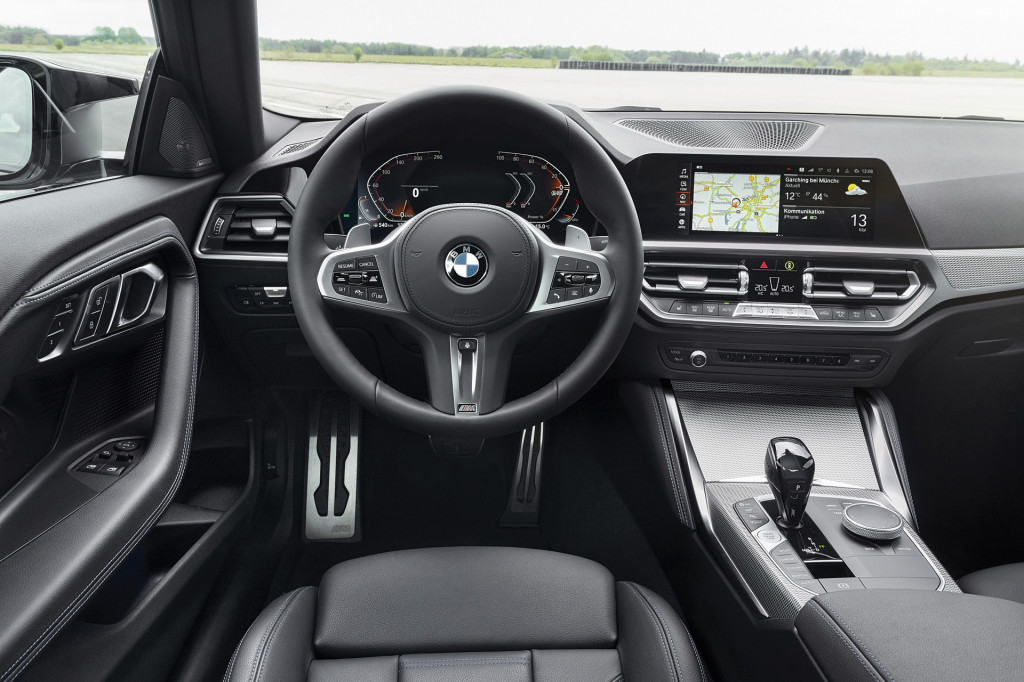
2022 BMW 2-Series
The price of performance
The 230i starts at $37,345, while the M240i is much more expensive, starting at $49,545. That gives the 230i a much stronger value proposition. Both models come standard with parking rear sensors, power front seats, adaptive cruise control, navigation, and blind-spot monitors, and the M240i adds the performance features listed above, plus a moonroof, ambient interior lighting, and darkened exterior trim.
The 230i I tested was only $46,570, and even with the upgraded screens and performance packages it cost about $10,000 less than the $56,845 price tag for my M240 tester. If you do want the 230i, I suggest staying away from the M240i at all costs. Test driving the more powerful engine will make stepping back down difficult.
For those who want even more performance, an M2 should arrive some time next year. It will likely feature a detuned version of the 3.0-liter twin-turbocharged inline-6 found in the M3 and M4 and produce around 420 hp. That’s up considerably from the 365 hp of the last M2 and should give the new car a slight edge over the 416-hp Mercedes-AMG CLA 45. Excitingly, a manual transmission is also expected, an option sadly missing for the M240i.
I was delighted to find that my initial apprehensions about the 2-Series were misplaced. Sure it’s gotten bigger, but it’s also gotten smarter and stronger. And those attributes win the day to give BMW a great driver’s car at the bottom of its lineup.
BMW paid for lodging and track time for Motor Authority to bring you this first hand report.
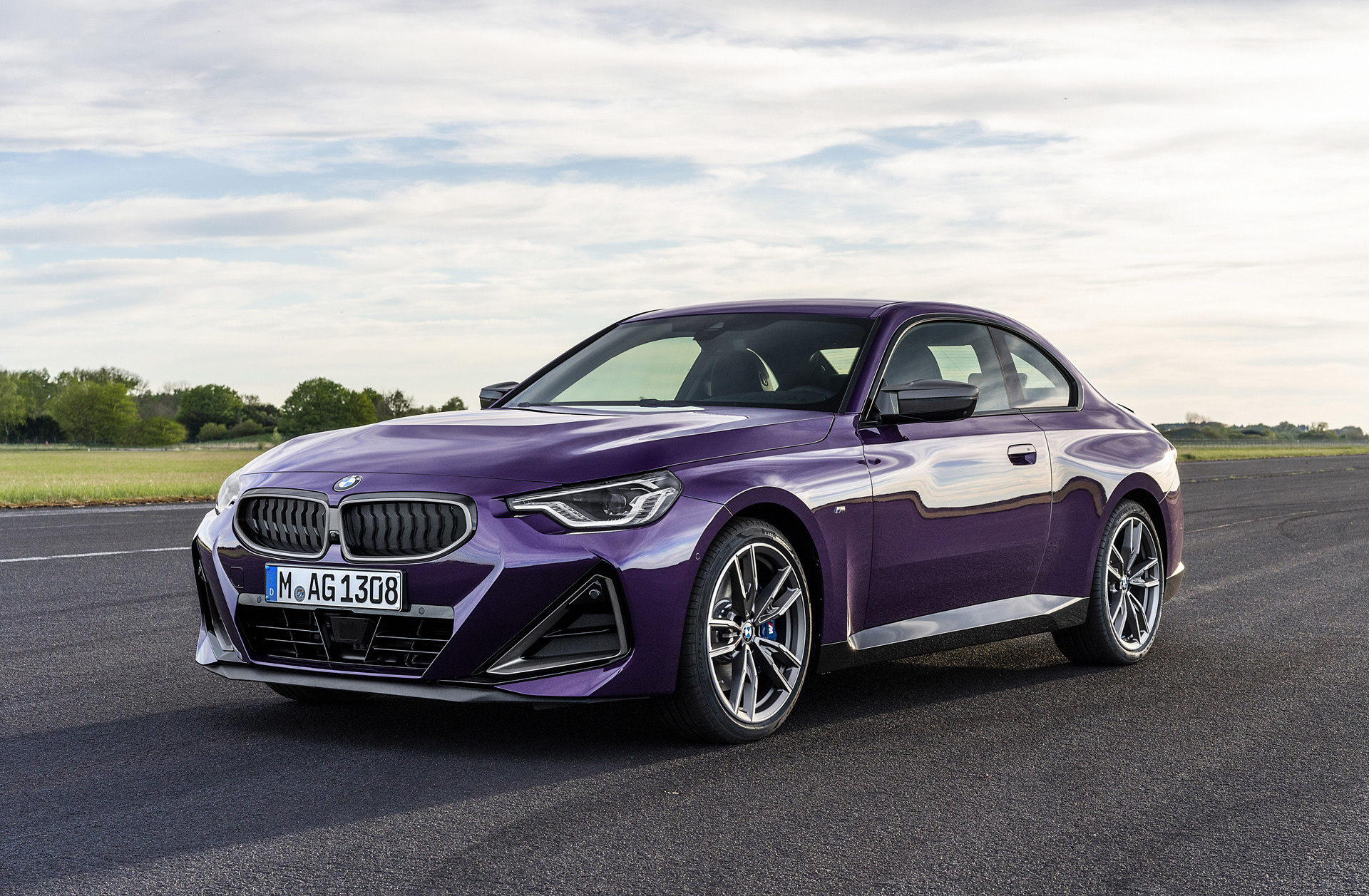
ivermectin 3mg tablet – brand tegretol 400mg order tegretol
amoxicillin online – where can i buy valsartan purchase ipratropium online
where can i buy azithromycin – order generic zithromax buy generic nebivolol online
buy prednisolone 5mg pill – order azipro 250mg sale purchase progesterone without prescription
buy neurontin 100mg sale – neurontin brand buy generic itraconazole
buy lasix 100mg pill – order furosemide 100mg pills betnovate 20 gm generic
buy generic doxycycline online – buy generic doxycycline oral glucotrol
where to buy tizanidine without a prescription – brand hydroxychloroquine 200mg microzide tablet
order viagra 100mg sale – cheap sildenafil 50mg generic cialis
oral tadalafil 20mg – viagra 100mg sale viagra medication
buy cenforce pills for sale – buy generic aralen over the counter buy glucophage 500mg for sale
order atorvastatin 80mg pill – amlodipine for sale zestril usa
buy omeprazole cheap – brand atenolol 50mg tenormin 50mg us
methylprednisolone 16 mg online – buy pregabalin 150mg sale triamcinolone 4mg drug
order generic cytotec 200mcg – diltiazem 180mg cheap oral diltiazem 180mg
buy acyclovir 800mg without prescription – order acyclovir 400mg purchase rosuvastatin generic
buy cheap generic motilium – oral cyclobenzaprine 15mg cyclobenzaprine 15mg price
motilium cost – order sumycin 250mg for sale flexeril 15mg drug
order inderal 10mg for sale – plavix 150mg canada order methotrexate generic
buy warfarin 5mg without prescription – buy cozaar 25mg order cozaar online
buy generic esomeprazole over the counter – esomeprazole 20mg tablet buy sumatriptan 50mg online
purchase levaquin without prescription – buy generic levaquin over the counter zantac 150mg price
purchase mobic online cheap – buy meloxicam paypal brand flomax
cost zofran – buy zofran 8mg generic buy zocor 10mg online
buy generic valtrex 500mg – valtrex canada buy cheap generic forcan